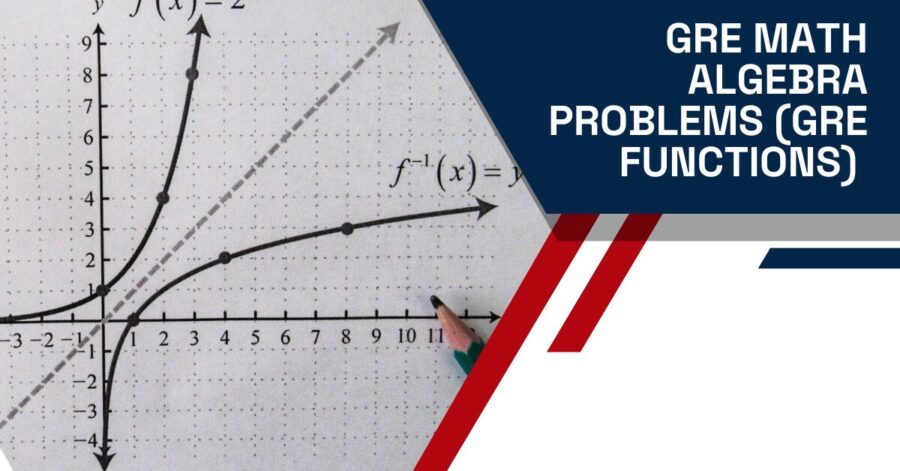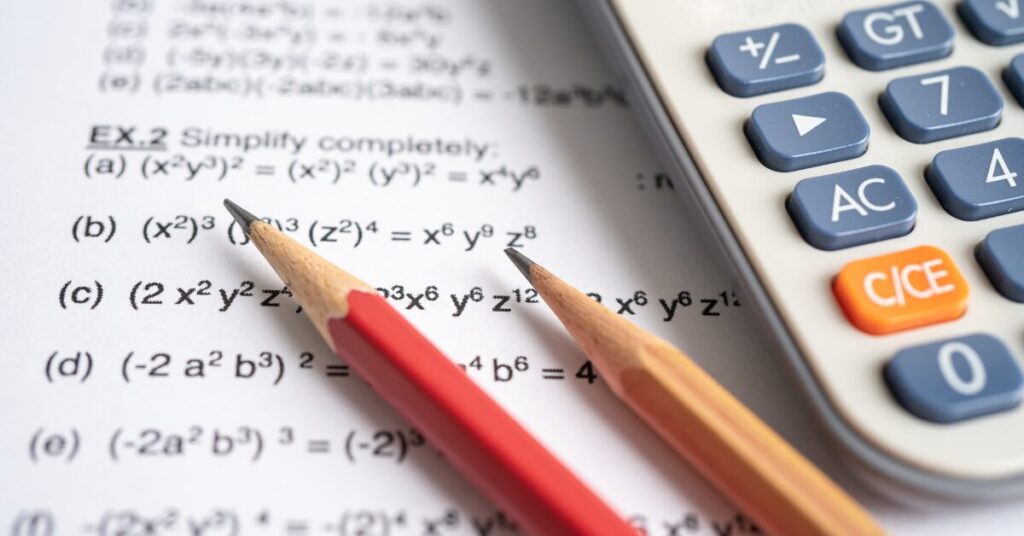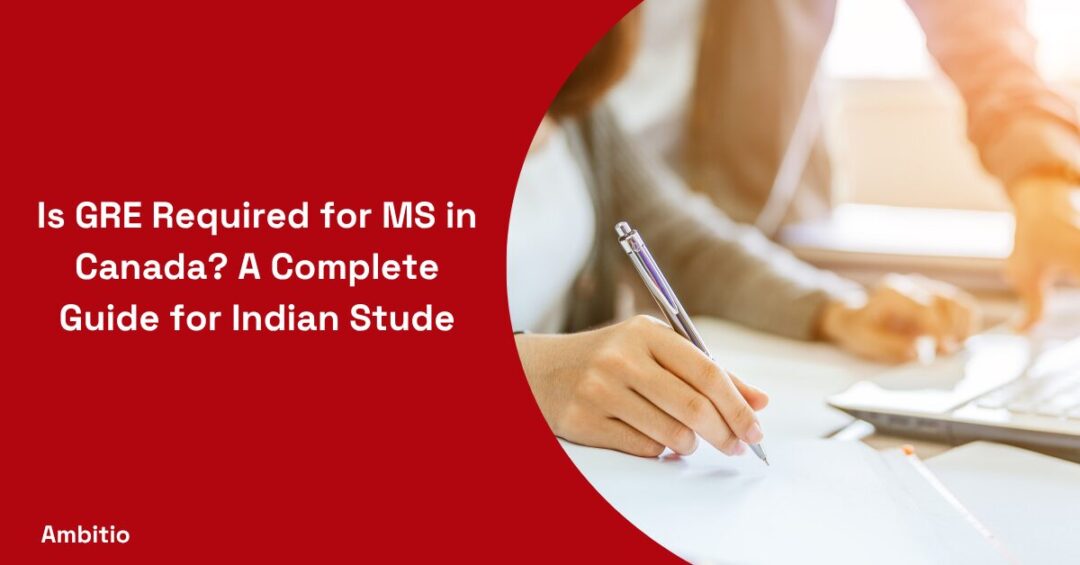6 September 2024
6 minutes read
GRE Math Algebra Problems (GRE Functions)

Key Takeaways
- Mastering algebra and functions is crucial for success in the GRE math section.
- Focus on understanding composite functions and function notation to avoid common pitfalls.
- Consistent practice with GRE math problems will boost your confidence and accuracy on test day.
Did you know that about 50% of GRE functions questions revolve around algebra, including functions? It’s no surprise that many test-takers find this section tricky. Algebra isn’t just about solving equations; it’s about understanding the logic behind each step, which can be overwhelming when you’re staring at multiple variables, odd functions, and complex word problems under a strict time limit.
The good news? Mastering GRE algebra doesn’t have to be complicated. By breaking down the core concepts—like how functions work and how to manipulate them—you can make these problems more approachable. With the right strategies and consistent practice, you’ll find yourself solving them with confidence on test day.
What are GRE Function Questions?
In GRE math, functions play a vital role in algebra. A function defines a relationship where every input corresponds to one output, represented as f(x) or g(x). For example, in the equation f(x) = 2x + 3, when you plug in x = 1, the function outputs 5. GRE questions often focus on how to apply rules to variables and correctly solve for the output, making this concept critical for the quant section. Understanding functions isn’t just limited to algebra but extends to geometry, statistics, and other GRE test areas. In between all this, have a clear idea of the GRE cut-off for the course and college you look for.

To excel in GRE math, you need to be familiar with how functions work across different sets of values. Practice questions will test your ability to follow the rule, define absolute value, and apply these concepts in real problems. The same applies to GRE compound interest problems as well. For instance, sometimes you’ll give a specific x value and must write the correct equation to find the answer. The key is to prep with examples where you can simply plug in numbers, check the line, and ensure you’re on the right track. Consistent practice will help you confidently handle these problems during the GRE.
How to Prep for GRE Math Section?
The GRE math section provides an overview of various quantitative concepts, including arithmetic, algebra, and geometry. It’s essential to understand expressions, symbols, and functions, especially when dealing with two functions or a composite function. For example, if you have f(g(x)), you must follow the correct order of operations by working through the inside function first before applying the outside function. This can confuse many students, so it’s important to obtain a solid understanding of these concepts. GRE cancellation is another aspect of the process you need to have an idea of. The same applies to GRE cancel score.
The math section usually contains 20 questions per section. You’ll encounter function notation that looks like computer science notation or parenthesis-heavy expressions. Thus, understanding the composition of functions and how to plot them is key. Another way to prep is by using websites that offer practice problems, articles, and tutorials. Make sure you attempt problems that reflect the nature of the GRE, ensuring you grasp how to approach different types of questions. i.e., focusing on the correct steps, not just the final answer. Make sure to understand whether a calculator is allowed in the GRE.
GRE Math Practice Questions Examples
Practicing GRE math questions is the best way to sharpen your skills and gain confidence in tackling the quantitative section, from algebra to complex functions.

1. Absolute Value Functions
Absolute value functions measure the distance of a number from zero. These problems often ask you to find how far a number is from a given point, and the answer is always positive. In some cases, you’ll need to solve equations involving absolute values, meaning you must consider both the positive and negative possibilities. The challenge is carefully handling both cases and ensuring you account for all possible solutions. Choose the right GRE books to help you with the process.
2. Quadratic Functions
Quadratic function problems involve equations where the input is squared. These functions typically have a U-shaped graph and can have one, two, or no real solutions. To solve these problems, you can factor the equation, complete the square, or use the quadratic formula. The key to solving quadratic functions is recognizing patterns in the equation and applying the correct method to find the solution. The same applies to GRE arithmetic problems as well.
3. Exponential Functions
Exponential function problems deal with equations where the variable appears in the exponent. These problems usually require you to solve for the variable by applying logarithms or using exponent rules. The challenge here is to simplify the equation and use the properties of exponents effectively. Understanding how to rewrite the equation to isolate the variable is crucial. Have a clear idea of the GRE exam fee as well.
4. Logarithmic Functions
Logarithmic functions are the inverse of exponential functions. These problems ask you to find the exponent to which a base must be raised to obtain a given number. Solving logarithmic equations often involves converting them to exponential form or applying logarithm properties to simplify. The difficulty lies in understanding how to manipulate logarithms and rewrite the equation to find the answer. Keep an eye on the GMAT exam dates meanwhile.
5. Rational Functions
Rational function problems involve functions that are the ratio of two polynomials. These problems often require you to find where the function is undefined or to simplify the function by factoring. Solving rational function problems can also involve solving for specific inputs, finding asymptotes, or analyzing the function’s behavior. The challenge is correctly simplifying the function and solving for the values that meet the criteria in the question. Understand the GRE exam time and how to plan accordingly.
6. Piecewise Functions
In piecewise functions, the function has different rules depending on the value of the input. For example, the function could say one thing if the input is positive and another if the input is negative. To solve these, you first check which condition your input falls under and then apply the corresponding rule. It’s about understanding which part of the function to use based on the input value. Understand the GRE exam eligibility to gain a competitive advantage.
7. Inverse Functions
Inverse functions reverse the original function’s operation. For example, if a function multiplies by three and subtracts five, the inverse function will add five and then divide by three. Solving inverse functions involves undoing the original function step by step, in the reverse order, to return to the original input. Understand the GRE exam benefits to grab the relevance of the process completely.
8. Absolute Value Functions
Absolute value functions measure how far a number is from zero, regardless of direction. You’ll often be asked to find the distance between a number and a set point, and this is always positive. In some problems, you’ll also need to solve equations that involve absolute value, which requires considering both positive and negative possibilities.
Conclusion
Mastering GRE math, especially algebra and functions, takes consistent effort and practice. By understanding the core concepts, like expressions, composite functions, and function notation, you’ll build a strong foundation for tackling the quantitative section. Remember, the key to success lies in solving practice problems, staying focused on the order of operations, and reviewing areas that confuse you. With the right preparation, you’ll walk into test day feeling confident and ready to excel.
Achieve your highest GRE score and unlock a world of graduate school opportunities with Ambitio. Our comprehensive preparation platform offers personalized strategies, detailed study materials, and full-length practice tests, all designed to enhance your skills across the GRE’s quantitative and verbal sections.
FAQs
What types of algebra problems are most common on the GRE math section?
You’ll often encounter problems involving linear equations, functions, inequalities, and quadratic equations, all requiring a strong grasp of algebraic rules.
How should I approach composite function questions on the GRE?
Start by solving the inside function first and then apply the result to the outside function—carefully follow the order of operations.
Can I use a calculator on the GRE for algebra questions?
Yes, a basic on-screen calculator is available for the GRE math section, but it’s best used for simple calculations, not for solving complex algebraic equations.
How can I improve my speed on GRE math problems?
Practice solving questions under timed conditions and focus on improving your mental math and familiarity with common GRE question types.
What’s a common mistake students make with function notation on the GRE?
Many students confuse the variable and its output—always ensure you correctly substitute and solve for the variable before interpreting the result.
How important is understanding the order of operations for GRE math?
It’s critical—mixing up the order can lead to incorrect answers, especially in complex algebraic or function-based problems.
What resources should I use to prep for the GRE math section?
Use a mix of official GRE prep books, online practice questions, and tutorials focused on algebra and functions to build a strong foundation.

You can study at top universities worldwide!
Get expert tips and tricks to get into top universities with a free expert session.
Book Your Free 30-Minute Session Now! Book a call now




























